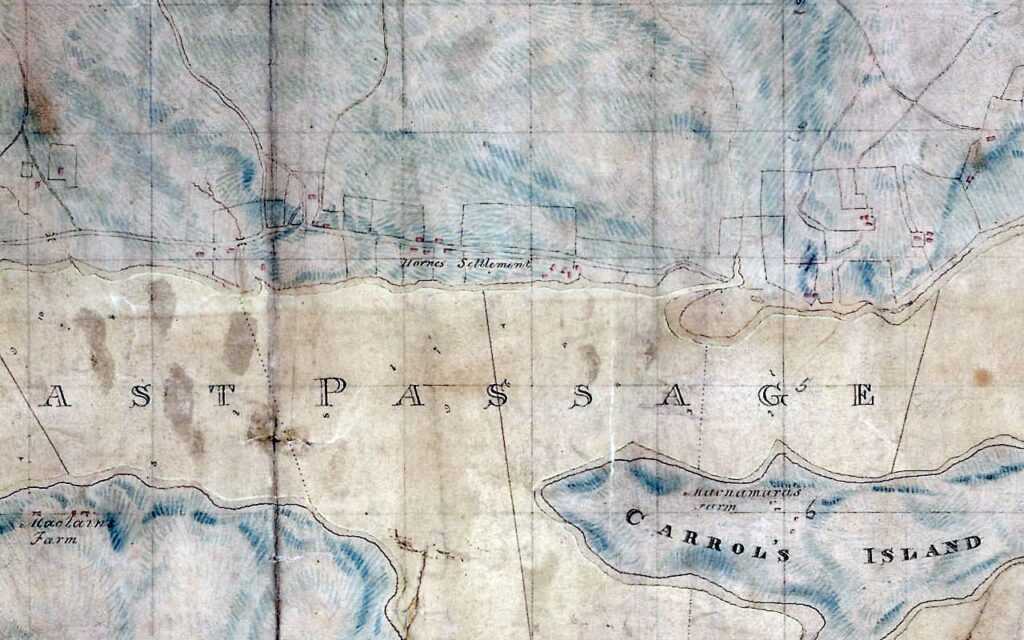From The Story of Dartmouth, by John P. Martin:
Lyle’s historic shipyard was located just south of the present Shipyards, on that stretch of shore below the railway line paralleling Cunard Street. Besides owning water lots there, Lyle purchased from Samuel Cunard the triangular piece of land now bounded by Prince, South and the waterfront. Lyle’s shipyard started about 1823.
The era of wooden shipbuilding, which lasted over a century, began to develop about this time. The shipyard of John Chappell, established prior to that of Alexander Lyle, is thought to have been on the shore where now stand the Dartmouth Shipyard cradles. The first record of a ship being built there is in December 1823 when Chappell’s launched a brig named the “Sir James Kempt” for the Halifax firm of Collins and Allison.
Jonathan Tremaine acquired the triangular block “M” at Green and King Streets, just below “Poplar Hill”. This had been the property of Samuel Starbuck, senior. But Tremaine’s residence is thought to have been in square block “E”, because he was re-granted land at the northeast corner of Portland and Wentworth in 1796, and purchased the remaining lots and buildings in that block from the Starbucks. According to Tremaine genealogy, Jonathan died in 1823 at Dartmouth where he had “a country seat.”
The first news of any consequence to be recorded in 1823 was somewhat tragic in its nature. In the deep snow of mid-January, Francis Smith and a 13 year-old son, exhausted by cold and fatigue, perished while returning to their farm on lonely Preston highway after a day’s trudge from Musquodoboit. The bodies, buried in the drifts, were not found for three days. The unfortunate father and son were only a quarter-mile from their door.
The Steam Boat Company again petitioned the Legislature for financial aid, and obtained a subsidy of £200. In that year the sum of £40 was voted for “altering and improving the road from Dartmouth to Fletcher’s”. This phraseology and grant, suggest that the section from Graham’s Corner was about to be opened up, no doubt during that summer.
In May 1823, another of the town’s early builders passed away, Jonathan Tremain, prominent Halifax merchant and promoter of a harbor bridge, died “at his country seat in Dartmouth”. He was 82.
The newspapers of October 31, 1823, reported that some fine ripe strawberries on exhibition at Halifax, had been gathered in Mr. Wallace’s garden at Dartmouth. These were probably picked on his Queen Street property, as he had previously sold the field, Block B, to John Skerry for £250.
Down at Eastern Passage that year, died Jacob Horn at the remarkable age of 101. He was among the last veterans of the Seven Years’ War, having fought under General Wolfe on the Plains of Abraham in 1759. After the peace, he is said to have traveled from Quebec to Halifax on snowshoes, and later received grants of escheated land at the Passage.


